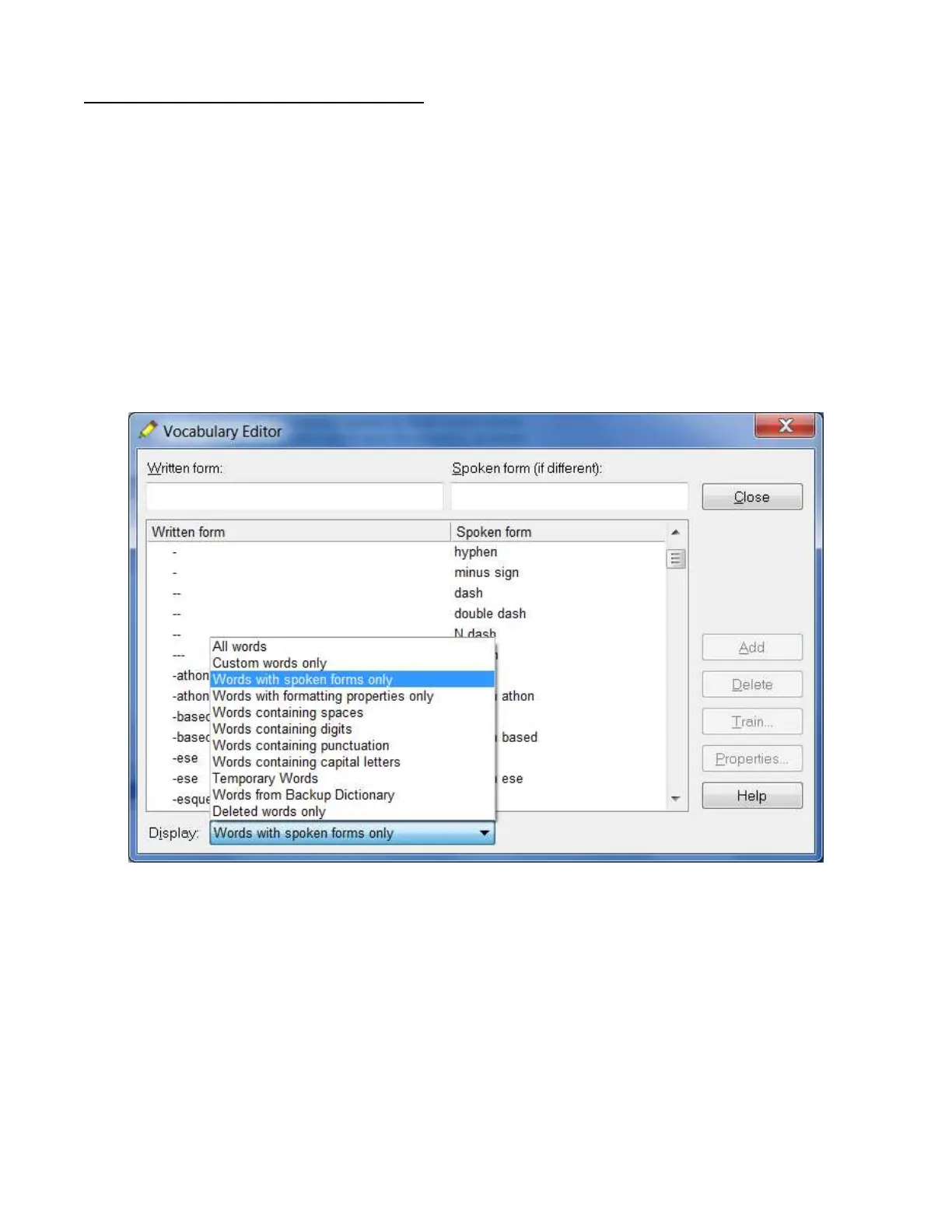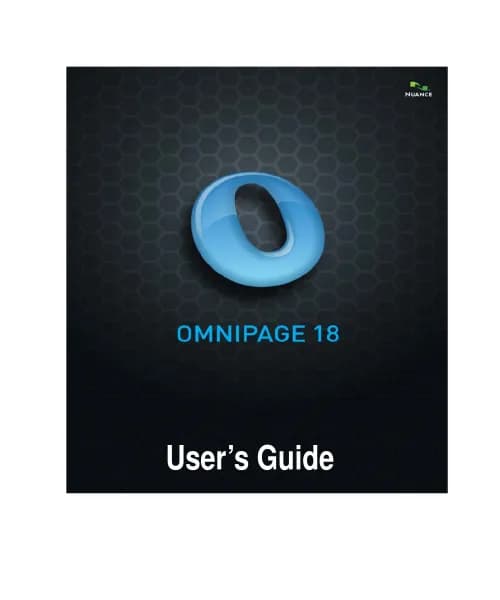Nuance Dragon NaturallySpeaking 11 handleiding
Handleiding
Je bekijkt pagina 23 van 108

Copyright 2011 Nuance Communications, Inc. All rights reserved
23
The importance of Spoken Forms
Radio programs often tell their listeners “let us know how to pronounce your name” because some names could
be pronounced in several ways and some are not pronounced “the way they are written” (due to silent letters,
for instance). This is true for more than just names. Acronyms are often pronounced letter by letter, but not
always: ASAP is pronounced "ay sap" by many people. These facts are addressed by an important Dragon
feature: the Spoken Form.
From the Display drop-down list of the Vocabulary Editor, choose “Words with spoken forms only.” Take a
moment to scroll through and look at existing spoken forms; you will get ideas for what kinds of entries warrant
them and how they can be written.
TIP
Vocabulary entries may have more than one spoken form. You may add spoken forms to custom entries as
well as to existing entries, in order to be able to dictate them as comes naturally to you: for example, to enter
the symbol ©, you might like to say “circle see” instead of the existing spoken form “copyright sign.”
Spoken forms must not include punctuation, abbreviations, or symbols. Here are a few examples:
Written Form: The Man from U.N.C.L.E
Spoken Form: the man from uncle
Written Form: St. Clement's Hospital
Spoken Form: Saint Clements Hospital
Written Form: Soddy-Daisy, TN.
Spoken Form: Soddy Daisy Tennessee
Bekijk gratis de handleiding van Nuance Dragon NaturallySpeaking 11, stel vragen en lees de antwoorden op veelvoorkomende problemen, of gebruik onze assistent om sneller informatie in de handleiding te vinden of uitleg te krijgen over specifieke functies.
Productinformatie
| Merk | Nuance |
| Model | Dragon NaturallySpeaking 11 |
| Categorie | Niet gecategoriseerd |
| Taal | Nederlands |
| Grootte | 21669 MB |





